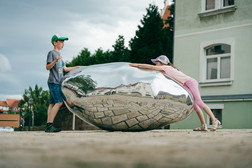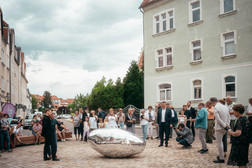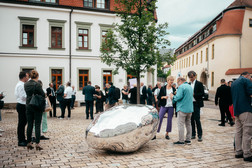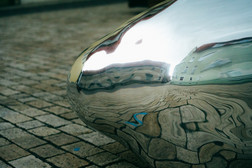Wilhelm Mundt: Trashstone 689
Freiberg
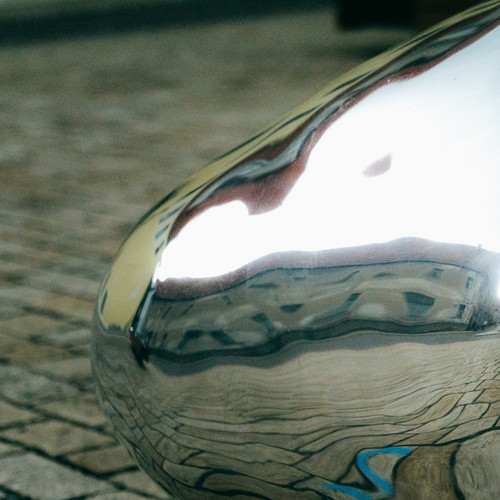
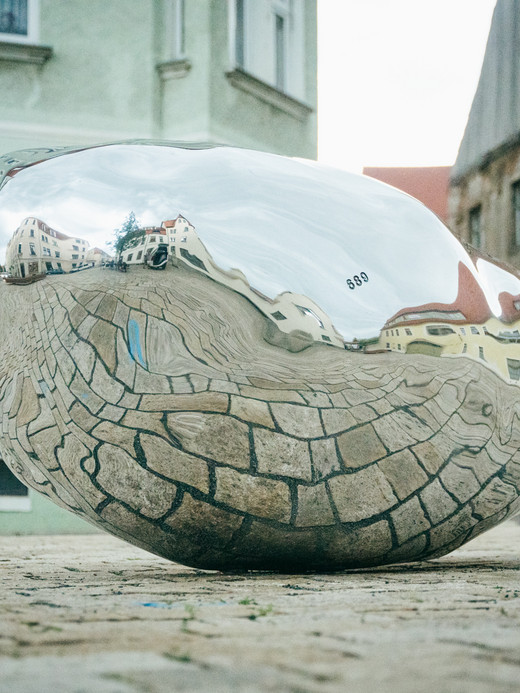
A silver lump lies erratically on Freiberg's Lomonossowplatz like a glacial relic. The sculptor Wilhelm Mundt, who was born in Grevenbroich in 1959, works in Rommerskirchen and teaches at the Dresden University of Fine Arts, has placed one of his iconic sculptures from the Trashstone series in the silver city. The elegantly reflective aluminum surface of the sculpture encloses a hermetic inner world, which, according to the artist, consists of production residues from the studio, but remains hidden from the viewer.
In the processes of visually scanning the amorphous forms and reflecting on the objects inside, the sculpture reflects its surroundings and allows the viewers, who see themselves in its surface as in a distorting mirror, to become involved actors. Alongside the experience of form and material on site comes the knowledge of the transformation of waste into art. What exactly is enclosed inside the sculpture remains its secret and thus creates a myth about its existence. Mundt's Trashstone is reminiscent of the early silver discoveries in the mining region around Freiberg, which triggered the “Great Mining Scream”, the “Gold Rush of the Erzgebirge”, in 1168. In addition to new settlers, silver mining also brought artists, writers and scientists such as Novalis, Alexander von Humboldt and Mikhail Vasilyevich Lomonosov to a town with a new liberal self-image. The miners were exempt from compulsory service and taxes. Both are still reflected in the name of the town today: Freiberg.
Wilhelm Mundt
Trashstone 689
In Freiberg, Lomonossow-Platz
Material: Aluminum production residues
Size: 1 x 2 x 1 m
Set up with the support of the town of Freiberg.
Adresse:
Lomonossow-Platz
Corner Färbergasse / Nikolaigasse
09599 Freiberg
to the location on Google Maps

